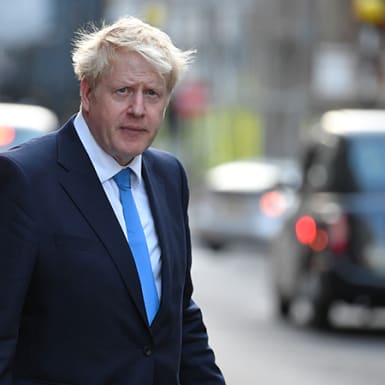investment insights
GBP: Beating up sterling


The new UK government under the leadership of Boris Johnson has wasted no time in pushing ahead with ‘no-deal’ Brexit rhetoric and planning. Over the weekend, Michael Gove (responsible for the oversight of the cabinet office) wrote in the Times that a ‘no-deal’ Brexit is a very real prospect and that the government is working under the assumption that the EU will not strike a new agreement. Although later Mr Johnson appeared to contradict Mr Gove by saying that he still believes in a deal being done, he subsequently said that he refuses to speak to the EU unless the latter adjusts key issues in the withdrawal agreement.
Moreover, further planning for the possibility of a no-deal Brexit is ramping up, with an additional GBP 1 bn likely for such preparations. This will add substantially to the GBP 4.2 bn already allocated and contrasts with Mr Johnson’s previous claims that chances of a ‘no-deal’ Brexit are a “million-to-one against”.
Amid this dangerous political posturing – accompanied by the absence of a realistic negotiating approach – sterling has yet again come under severe pressure. In our FX Monthly we “highlighted increased risks that GBPUSD could approach the 1.20 level in the summer months, as harsh political rhetoric (on Brexit) would lead the market to start pricing in a higher ‘no-deal’ Brexit premium”.
This is pretty much what we have so far: UK hard Brexit politicians openly implying increased odds of a no-deal (or ‘chaotic’) Brexit, which has sent GBP to its lowest level since early 2017. To put this into perspective, consider that since mid-March (sterling’s highs for the year), GBP has depreciated 12% against the JPY, 9% against the USD, and nearly 8% against the EUR. In fact, every G10 and major EM currency has gained against GBP over this period.
Now that GBPUSD is trading below 1.22 and EURGBP above 0.91, everyone is asking whether more pain for the pound lies ahead. Our view is that risks remain tilted to the downside, at least in the short term, unless the UK government significantly shifts its stance. Consequently, we see reasonable odds of GBPUSD dropping to or below 1.20 and EURGBP rising above 0.93 during August.
We think it unlikely that the government will change direction noticeably in the short term (although the end result is still up for debate) as Mr Johnson wants to ensure he pleases his base with his “come what may” promises during his first weeks as UK prime minister. Furthermore, sterling appears very vulnerable on two additional and interrelated fronts: economic data developments and central bank stance.
Economic data recently shows increasingly worrying signs. The UK composite PMI for June fell to 49.7 (below the breakeven level of 50), its lowest reading since summer 2016. The Markit/CIPS construction index collapsed to 43.1 in June – a multi-year low, as business confidence clearly continues to deteriorate.
The Citi UK economic surprise index is now hovering around its lowest point since 2012. Moreover, the labour market numbers released on 16 July (+28k 3M/3M) showed employment gains at their lowest since August of last year. The Office of National Statistics reported recently that London house prices fell 4.4% in May year on year, the largest yearly fall since the 2009 crisis. In short, UK economic prospects are growing even darker.
All this is bound to have implications for monetary policy. So far, the Bank of England has maintained a central scenario of a ‘soft Brexit’ and its outlook was “conditioned on a path for Bank Rate that rose to around 1% by the end of the forecast period”. More specifically, and according to the bank, there would likely be “ongoing tightening of monetary policy over the forecast period, at a gradual pace and to a limited extent”.
However, recent speeches by Monetary Policy Committee members (including Mark Carney) suggest that there is a change of sentiment towards highlighting the increase in downside risks.
Consequently, the next BoE meeting on Thursday, 1 August is likely to see the committee adopt a more neutral, and possibly somewhat dovish, stance. Of course, the market has already moved in that direction, as the rates market is currently pricing in about 30 bps of cuts over the next twelve months and UK yields have collapsed to two-year lows. However, the confirmation of a shift in the BoE’s stance would not leave sterling unscathed.
On balance, we think there is further room for sterling to depreciate against majors (USD, EUR, JPY and CHF) in the weeks ahead, amid a confluence of negative factors.
Certainly, the build-up of short GBP positioning is an issue, but we think that, for now, the downside momentum is more than strong enough to offset that.
In terms of valuation, there is little doubt that the moves have brought GBP to quite undervalued territory. Still, valuation considerations are unlikely to prove strong enough as long as the possibility of a chaotic exit from the European Union looms.
Investors should buckle up for a turbulent August for sterling. Medium term, the path of GBP will clearly depend on the final form of Brexit. But we are certainly not there yet.
Important information
This document is issued by Bank Lombard Odier & Co Ltd or an entity of the Group (hereinafter “Lombard Odier”). It is not intended for distribution, publication, or use in any jurisdiction where such distribution, publication, or use would be unlawful, nor is it aimed at any person or entity to whom it would be unlawful to address such a document. This document was not prepared by the Financial Research Department of Lombard Odier.
Read more.




share.